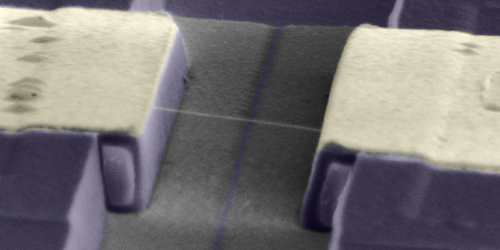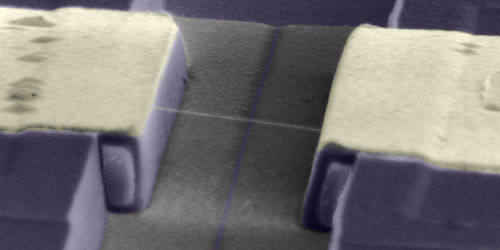Squeezing an Electron Crystal
The Wigner crystal is an elusive beast. Predicted in 1934, this crystal of electrons, which is one of the most strongly correlated states of matter, forms when the electron density is ultralow. But a lack of clean enough systems with that property make it hard to measure. Within the last few months, researchers have imaged its structure. Now another group, led by Vikram Deshpande at the University of Utah, Salt Lake City, has measured the energy required to add an electron to the crystal, a quantity that reveals the interaction strength of the system. Deshpande says that they were happily surprised to finally achieve the result, as it comes after decades of inconclusive measurements by other groups.
The team created a Wigner crystal by adding electrons one by one to a carbon nanotube suspended between two supports and cooled to 1.5 K. By measuring the energy required to add each electron, the team calculated the resulting Wigner crystal’s electronic compressibility, a parameter that characterizes the ordering of electrons in the lattice. Comparing their results to predictions, the team observed the expected decrease in compressibility as electron density increased.
Deshpande says that previous measurements were inconclusive as they were muddied by another effect: changes in the crystal’s size. When an electron is added to a Wigner crystal, the crystal expands. Disentangling the properties of the crystal—like how well its electrons line up in the crystal lattice—from unknown changes in its size was previously undoable. The team overcame this difficulty by repeating the experiment with a range of parameters, such as the length of the carbon nanotubes and their band gap energy.
This research is published in Physical Review Letters.
–Katherine Wright
Katherine Wright is a Senior Editor for Physics.





